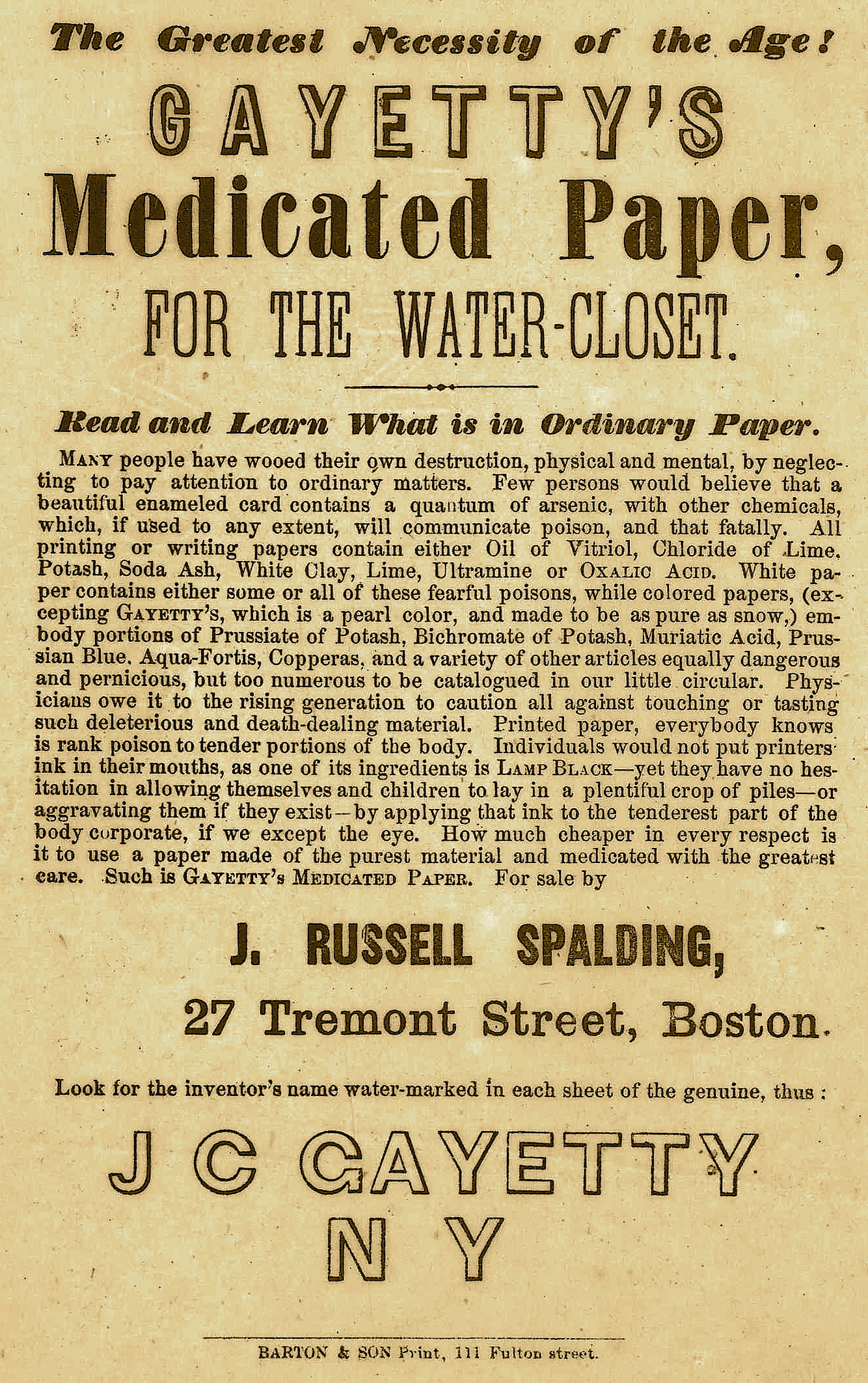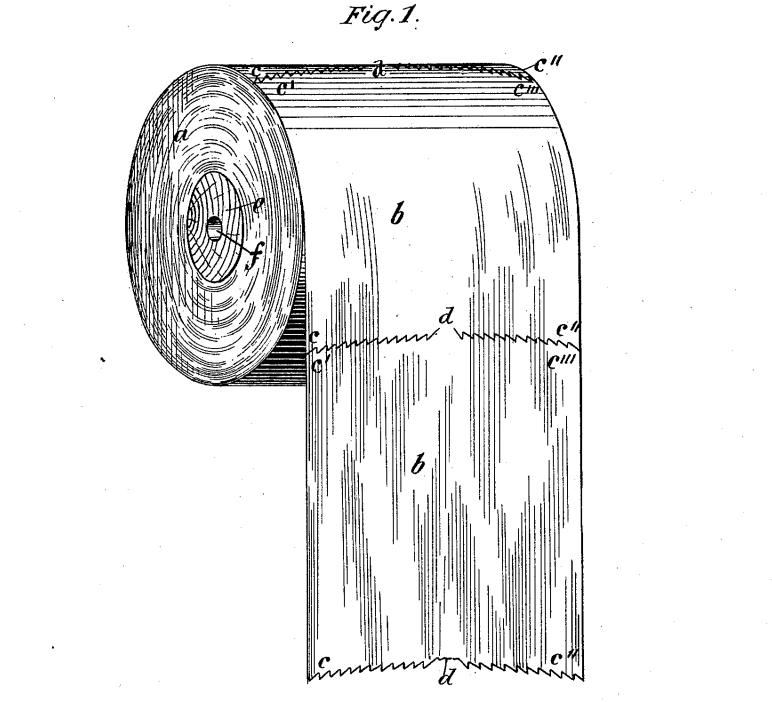Toilet Paper
Toilet paper is a paper product made of pulp (wood or previously recycled paper), water, and chlorine/bleach primarily used for hygiene purposes. There are other uses for toilet paper as it is a readily available household product. Such as pranks. Toilet papering is a form of temporary vandalism. The bundle is known as a toilet roll, loo roll, or bog roll (Britain). There are different plies from 1-6. And of course, the long debate on over or under.
Let's Go Back
In 6th century China, the use of paper for hygiene has been recorded as early as 589 when the scholar Yan Zhitui (531-591) wrote, “Paper on which there are quotations or commentaries from the Five Classics or the names of sages, I dare not use for toilet purposes.”
FIVE CLASSICS: Classic of poetry, Books of documents, Books of Rites, I Ching, Spring and autumn annals.
During the 14th century an annual supply of 720,00 sheets of toilet paper were manufactured for the general use of the imperial court. These sheets were approximately 2x3 feet sheets of perfumed paper.
Elsewhere wealthy people wiped themselves with wool, lace, hemp while less wealthy people, when pooping in rivers, would use their hand, wood shavings, leaves, grass, hay, stones, sand, moss, snow, ferns, plant husks, fruit skins, sea shells, corn cobs.
In Ancient Rome a sponge on a stick called a Xylospongium was used to wipe the bottom and after use it was placed back in a bucket of water, vinegar, and salt. These sponges were usually used communally in public latrines. This was a breeding ground for bacteria which lead to a lot of disease.

A replica xylospongium
by Dickson. Herdemerten, via Creative Commons
In Ancient Greece small pebbles or pieces of pottery with smooth edges were used to scrape themselves clean. Some historians think that they would use pebbles that had their enemy’s names written on them.
In England – For nearly 500 years the Kings and Queens of England had a special servant that was titled “The groom of the stool” or “First lady of the bed chamber” Depending on if the ruler was a man or woman. It was their job to take care of the ruler while they were doing their business. It’s not clear if they actually wipe the royal bum but they were told to ensure that there be blanket, cotton, or linen to wipe the kings nether end. The job was actually highly prized because they often got to hear the rulers private thoughts which made other court members afraid of them for the secrets they held. It was often held by a person of high nobility. The position was first held in 1455 and was not eliminated until 1901.
16th Century French satire writer, Francoir Rabelais wrote in his book series Gargantua and Pantagruel that his character Gargantua investigates a great number of ways to cleans ones self. Gargantua dismisses the use of paper as ineffective, “Who his foul tail paper wipes, shall at his ballocks leave some chips.” He concluded that, “The neck of a goose, that is well downed, Provides an optimum cleaning medium.”
Toilet Paper More Recently
Joseph Gayetty is widely credited with being the inventor of modern commercially available toilet paper in the USA in 1857. Sold in flat sheets of paper close to the modern tissues box of today, each paper was watermarked with his name on it. The advertisement tagline was, “The greatest necessity of the age! Gayetty’s medicated paper for the water closet.” Medicated meaning Aloe, they were marketed for preventing hemorrhoids. At the time his toilet paper was not well received because most people didn’t think they needed to spend money on paper when it was so readily available. The Sears Catalog was a popular choice as it was thick and free. The Farmers Almanac was also a popular choice. Americans would nail it to the wall, which lead the company to pre-drill a hole in their publication. Gayetty tried to convince people that the ink from these papers was toxic, “You wouldn’t put ink in your mouth so why put it on the most sensitive regions of the body.”

An advertisement for Gayetty's Medicated Paper for the Water-closet
Source: Ephemeral New York
The toilet roll was popularized by Scott Paper Company in 1879 Clarence and Edward Scott founded Scott paper company in Philadelphia. They manufactured toilet paper for fancy hotels as a luxury item and drug stores as a health product, but they did this through third parties because they were embarrassed about the nature of their product. It wasn’t until 1902 that Scott started manufacturing their own toilet paper under their name.
Seth Wheeler of Albany, New York is the patent holder of the toilet paper we know today. Featuring the paper being dispensed on a roll and having perforated edges in 1891.

Fig. 1 of Seth Wheelers toilet paper roll patent.
Source: Google Patents
But alas People were very reluctant to jump on the toilet paper wagon. People in the Victorian Era where very prudish and didn’t want to discuss bodily happenings and certainly didn’t want to be caught buying such a product. However, the invention of flushing toilets was forcing the people to seek out other options than the newspapers and catalogs because those bulky papers would clog the pipes.
The refinement of this product had a long period of time considering that in 1930 a selling point of the Northern Tissue (Quilted Northern) company was that their toilet paper was “Splinter Free.”

An newspaper advertisement for splinter-free Northern Tissue
Source: Newspapers.com. The Miami News, December 6, 1935.
In 1928 The Hoberg Paper company tried a different approach. The company introduced a brand called Charmin (Playing off the word charming) with a feminine logo of a beautiful woman. It was a genius campaign — By using softness and femininity the company avoided TP’s real use while making the product luxurious.
Two Ply was introduced in Britain in 1942 by St. Andrew Mills this became Andrex. They then went on to first introduced moist toilet paper (wet wipes) in the 1990’s. They were promoted to be flushable but by 2016 some municipals had begun education campaigns advising not to flush.
It wasn’t until the 1970’s that television networks in the USA allowed advertising under the name toilet paper rather “bathroom tissue.”
In 1973 Johnny Carson joked on the Tonight Show about some comments made by a Wisconsin Congressman about the possibility of a toilet paper shortage. Subsequently consumers purchased abnormal amounts of the product and an actual shortage happened.
During the beginning of the Covid-19 pandemic there was a shortage in multiple countries due to hoarding and panic buying. In other countries the badet was already seen as a solution.
Toilet Paper: The Problem
Seventy percent of the population doesn’t even use toilet paper for various reasons but Americans need 36.5 million rolls every year. A 2019 study found that Americans used nearly 3 rolls per person every week.
That is...
- 473,587,500,000 gallons of water (700,000 Olympic-size swimming pools)
- 253,000 tons of chlorine
- 17.3 terawatts of electricity
Most of the common brands are non-recyclable which means the pulp for that toilet paper is virgin wood. Some brands use recycled paper. Maybe consider the next time you go shopping:
- Who Gives A Crap
- Everspring (via Target)
- 365 Bath Tissue (via Whole Foods)
- Seventh Generation
- Trader Joe’s